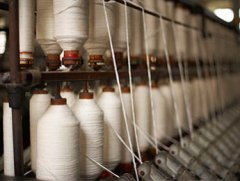The government of the South Indian state of Karnataka has officially released the New Textile Policy 2013-18 document, which envisages attracting investment of Rs. 100 billion and in the process creating about 500,000 new employment opportunities.

The new policy, approved by the state Cabinet last month, replaces the Suvarna Vastra Neeti (2008-13) policy.
Announcing the new policy, Textile and Ports Minister Baburao Chinchansur said the state has been categorized into three zones under the policy. Zone 1 includes backward districts with potential for textile activities, and these districts will get maximum benefits.
Zone 2 includes areas with very little or no textile activities and these areas would receive marginally lesser benefits, while all areas falling under Bangalore urban district, except Ankeal taluk, would fall under Zone 3, which would not receive any benefits under the new policy, the Minister told presspersons.
One of the features of the new policy, which aims at making Karnataka a preferred textile destination, is that small and medium investors would get interest subsidy for projects costing up to Rs. 990 million, as part of the amount sanctioned for credit-linked capital subsidy.
For units investing Rs. 100 million to Rs. 990 million, the credit-linked capital subsidy would be in the range of 15 percent to 20 percent with an upper limit of Rs. 60 million. For micro, small and medium enterprises (MSMEs) with investment up to Rs. 100 million, the credit-linked subsidy would also be in the range of 15 percent to 20 percent, but with a ceiling of Rs. 20 million.
Entrepreneurs belonging to Scheduled Castes and Scheduled Tribes, as well as those belonging to ex-servicemen, minority, women and physically challenged categories would be provided an additional subsidy, the Minister said.
The textile policy also has a special credit-linked capital subsidy plan for integrated textile units.
In addition, a subsidy of 15 percent to 20 percent with upper ceiling of Rs. 10 million would be provided for modernization of existing units, while cooperative spinning mills would be given a subsidy of 20 percent with upper limit of Rs. 20 million for revival and upgradation.





